Dr. Phil Zeltzman’s Blog
10 ways to help a pet with arthritis
About 30% of cats and dogs are affected with arthritis.

Before we discuss 10 ways to help, please remember: arthritis cannot be assumed. It has to be proven (X-rays are one good way).
Giving anti-inflammatory drugs to your pet just because somebody “thinks” (s)he is affected by arthritis is just not appropriate. There is no cure for arthritis, but it can be controlled. Here are 10 ways to help…
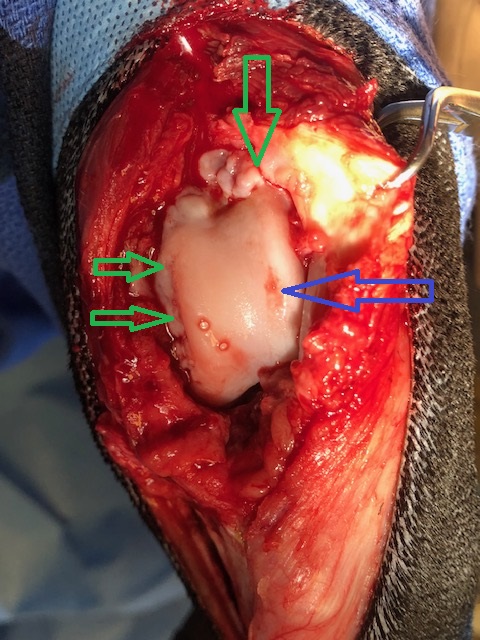
1. Weight loss or weight control
Extra pounds add pressure on joints with arthritis. Losing weight is then critical. Your family vet can help your pet lose weight (with weight-loss food), or maintain the weight (with a “light” diet). One classic research study showed that “in overweight dogs, weight loss alone may improve lameness.”
It is important to remember that the front legs support 60% of the weight, whereas back legs carry 40%. Therefore, weight loss is even more important with arthritis in joints of the front legs: shoulder, elbow or wrist (carpus).
2. “Arthritis” diet
Once your pet has an ideal weight, you can switch to an arthritis diet. These diets are typically enriched in glucosamine, antioxidants (such as vitamins C and E) and omega-3 fatty acids (fish oil).
Such diets are perfectly balanced, i.e. they have all the necessary nutrients, vitamins and minerals, so they can be fed for life. However, they are not appropriate for a growing pet, so they should be used in adults only.
Pro tip: there is now a special food that help with weight loss (or weight control) and arthritis at the same time – a major improvement.
3. Joint supplements
Because there is never enough glucosamine or fish oil in any pet food, it is important to give supplements by mouth in addition. We will recommend them after most orthopedic surgery to manage the arthritis.
Other supplements can be injected by your family vet.

4. Controlled exercise
Lack of activity leads to muscle loss, a decreased range of motion in the joints, aka stiff joints, and weight gain (if you don’t decrease the calories).
Despite the discomfort, it is very important to continue exercising. Generally, slow leash walks are ideal. You can progressively increase their duration. For example, start with 5 minutes 2-3 times daily for one week, then increase that by 5 minutes each week.
These walks help keep muscles strong and joints flexible.
Supervised swimming, or walking in wet sand, or tall grass, are another great ways of providing low impact exercise, as long as your dog doesn’t struggle to get into or out of the water. Encouraging exercise in a cat can be challenging, but some owners are able to train their cat to walk on a leash!
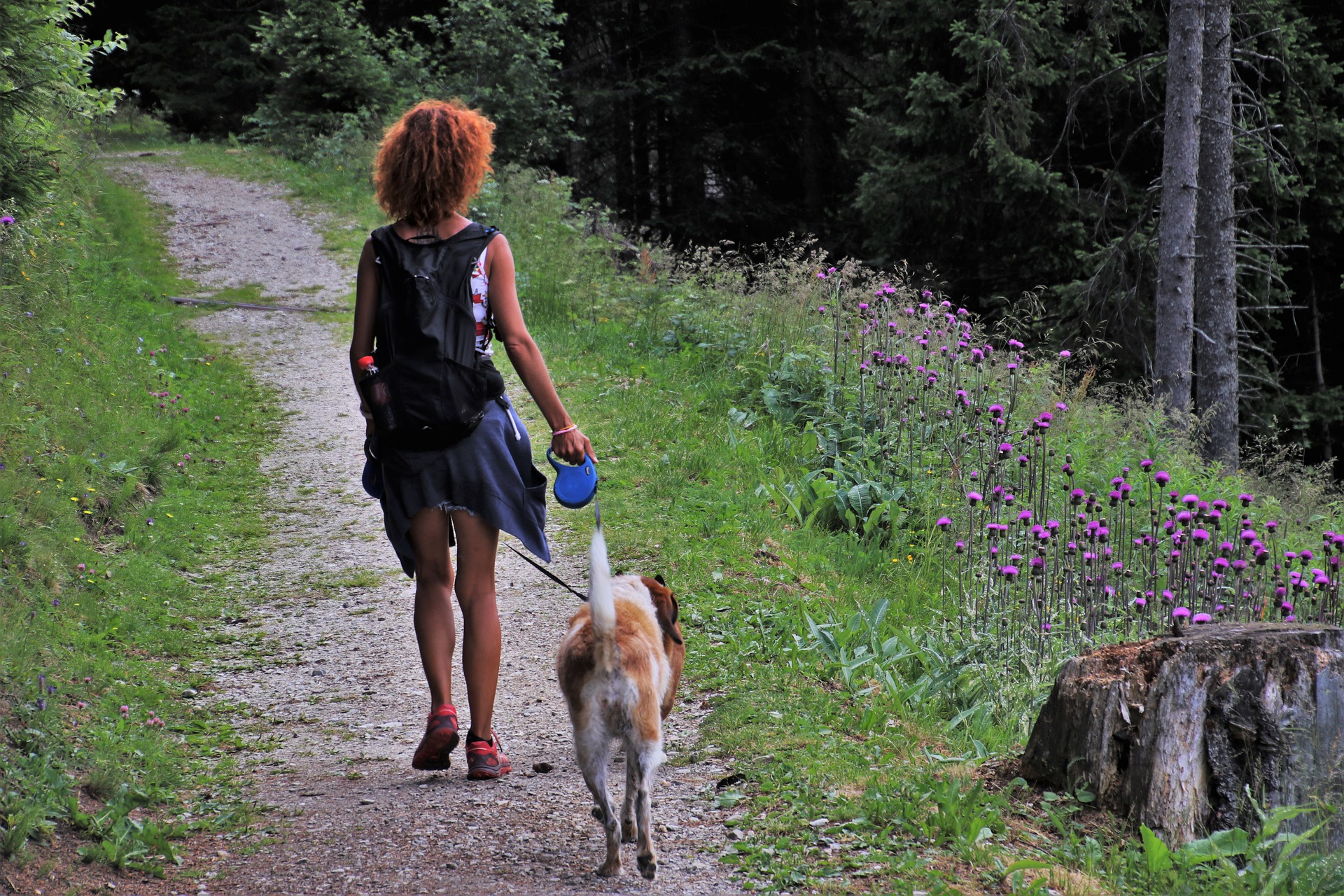
5. Physical therapy (PT)
Even though untreated arthritis causses pain, not moving is only going to make thigs worse.
Physical therapy is a great, gentle wait to move joints in a controlled way.
Done at home or at a physical therapy center, PT can make a dramatic difference. Most doggie physical therapists (officially called rehabilitation practitioners) will perform some exercises that can only be done at their facility, such as walking in an underwater treadmill, and will show you exercises to do at home. PT starts with a “warm up” and ends with a “cool down.”
If you have ever needed PT for yourself, you may appreciate how dramatic a difference it can make in your pet’s life. I have personally seen rehab practitioners perform small miracles on some patients!
6. Anti-inflammatory drugs
The most commonly used pain medications used for arthritis pain are Non-Steroidal Anti-Inflammatory Drugs (NSAIDs). Ideally used on an as-needed basis, rather than every single day, modern NSAIDs are safer and more potent than aspirin & “people” drugs. By the way, please never use people drugs in your pet without your vet’s complete approval, especially in your cat. Some of these drugs can be deadly.
Potential side-effects of veterinary NSAIDs include vomiting and/or diarrhea, with or without blood, lack of appetite, lethargy or jaundice (a sign of liver disease), or kidney disease. Your family vet will typically perform regular lab work, testing blood and urine, e.g. every 6 months or more often in at-risk patients, to monitor possible side-effects.
7. Pain medications
When anti-inflammatory drugs cannot be used, or are not strong enough, other pain killers can be given (gabapentin, tramadol etc.). There are other options, which need to be tailored to each individual patient. Sometimes, it is a matter of “trial and error” until the ideal drug combination is found. Every patient is different, so there is no ideal solution that works on all patients.
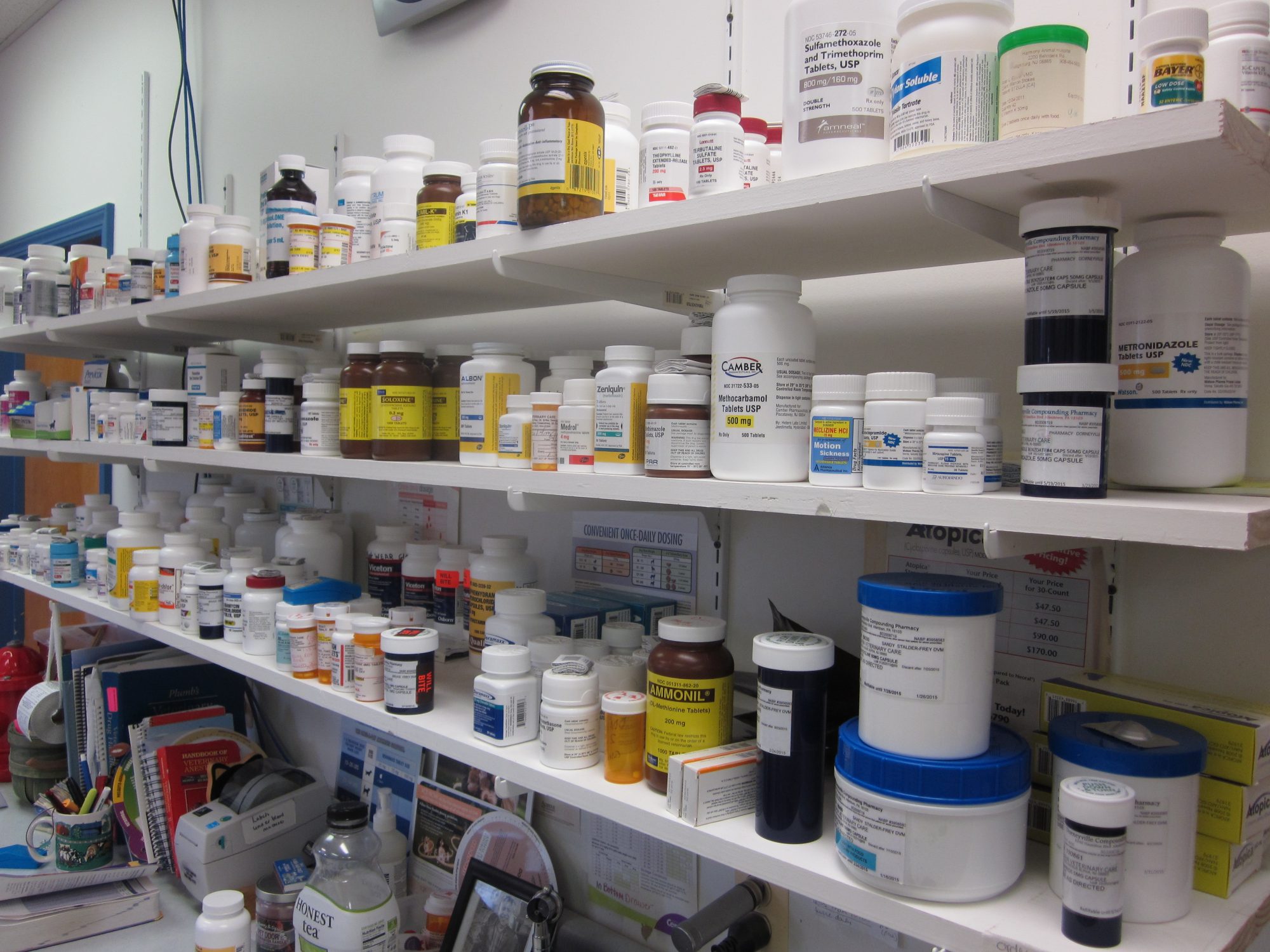
8. Environment changes
Many small tricks can help. Keeping your pet in a dry and warm place should help, just like it would help an arthritic person. It is important to keep your pet on thick, soft, clean padding at all times, rather than on tile or linoleum (although some pets seem to prefer those!). Minimize access to stairs. Elevate the food & water bowls.
If you have a few steps on your deck, you could build a ramp. Some companies sell steps to help pets get onto furniture more easily. To get in the car or the truck, you can also use a ramp. Whether inside or outside, always provide good footing so your pet doesn’t “do the splits”. Hardwood floors can be covered with area rugs or yoga mats. And be extra careful on ice during the winter time. Pets can get seriously hurt after slipping on ice. An easy solution is to use a sling under your dog’s belly.
9. Periodic re-evaluations
Follow up exams with your vet are critical to adjust the plan to your pet’s progress. For example, if you are trying to make your pet lose weight, monthly weigh-ins are important to track your progress. The amount of food may need to be adjusted, otherwise the weight may just plateau if you continue feeding the same amount.
Similarly, pain medications could be changed or the dosage adjusted depending on your pet’s progress.
10. Surgery
In some cases, surgery is an excellent way to treat arthritis. From simple procedures (removing a flap of cartilage or part of a bone) to more complicated surgeries (fusing a joint, or a total hip replacement), ask your family vet or your surgeon if your pet would benefit from surgery.
So there you go: there are (at least) 10 ways to help a pet with arthritis. There are other modalities, such as acupuncture and stem cell therapy, which you can discuss with your family vet or your surgeon.
Phil Zeltzman, DVM, DACVS, CVJ, Fear Free Certified

Dr. Phil Zeltzman is a traveling veterinary surgeon in Pennsylvania & New Jersey. An award-winning author, he loves to share his adventures in practice along with information about vet medicine and surgery that can really help your pets. Dr. Zeltzman specializes in orthopedic, neurologic, cancer, and soft tissue surgeries for dogs, cats, and small exotics. By working with local family vets, he offers the best surgical care, safest anesthesia, and utmost pain management to all his patients. Sign up to get an email when he updates his blog, and follow him on Facebook, too!
Puppy Magic, my biggest ethical dilemma of 2020
Puppy Magic, a now 13 year old Labrador, never knew that he was my biggest ethical dilemma last year. He has a very interesting story and a long journey…
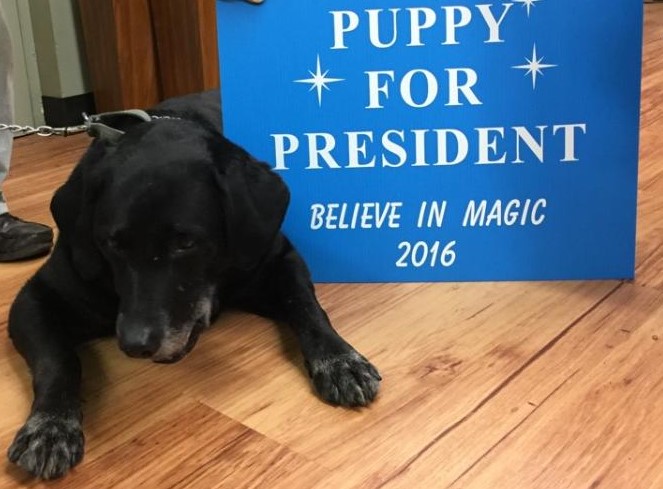
In June of 2019, Puppy Magic had a TPLO to treat a tear of his left ACL. This is my most common surgery by far, so it was supposed to be straightforward. But when a nurse placed a tube in Puppy’s windpipe at the beginning of anesthesia, a mass was noticed in the very back of his mouth. A biopsy of the mass was sent to the lab. The TPLO surgery went well and Puppy went home smoothly.
A week later, the biopsy returned as a malignant melanoma, an aggressive type of cancer.
You could say that it was an accident that the nurse noticed the mass. I firmly believe that it was not. It was found because of the attention to detail and experience of the anesthesia nurse. Not only did she notice the mass, but she alerted her vet who acted on it.
Puppy’s very dedicated owner, thankful that the cancer was caught so early, went to consult with a cancer specialist (oncologist). Incredibly, melanoma can be treated with a vaccine in dogs. Puppy responded well to the treatment and went into remission.
Over a year later, Puppy Magic was taken to the ER because of a limp in the right back leg. A torn ACL was diagnosed – again. In addition, Puppy Magic showed signs of laryngeal paralysis, i.e. difficulty breathing. The ER doctor told the owner that he didn’t recommend addressing the ACL tear or the breathing difficulty in a dog with oral cancer.
When I heard about it, that put me in a very delicate situation.
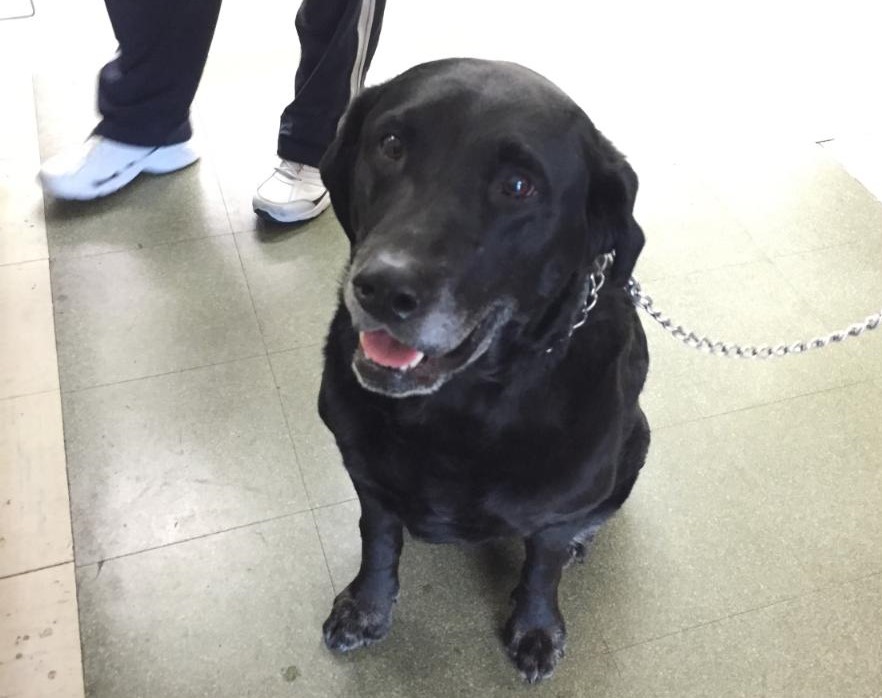
What was I supposed to do?
Say nothing, and allow my patient to suffer from his painful knee, and suffocate because of the laryngeal paralysis?
Or keep my opinion to myself, rather than going against a colleague’s advice?
After a week of mulling over this ethical dilemma, I gathered enough courage to call the owner. I was extremely hesitant. Was this even ethical?
I was convinced that I could help Puppy Magic, but what if something went wrong?
So we had a candid conversation. We discussed the facts. We weighed the pros and the cons. I very clearly explained the possible complications.
In the end, only Puppy Magic’s owner could make the final decision.
The additional difficulty was to decide which surgery to do first: the TPLO or the laryngeal paralysis surgery. Arguments could made either way…
After thinking about it, Puppy’s owner decided to take a chance, and put his dog’s future in my hands…
That’s a lot of pressure…
We eventually both agreed to start with the TPLO.
So in September of 2020, we did another TPLO, this time on the right knee.
Fortunately, thanks to the TLC and dedication of his owner, Puppy recovered smoothly.
Then in December of 2020, we did surgery to treat the laryngeal paralysis.
But wait, there’s more!
During his recovery, Puppy started to limp on the right FRONT leg. His family vet noticed some swelling of one of his toes. Long story short, there was a strong suspicion of cancer.
On the X-ray below, you can see 4 normal toe and 1 very swollen toe on the left (red arrow)…
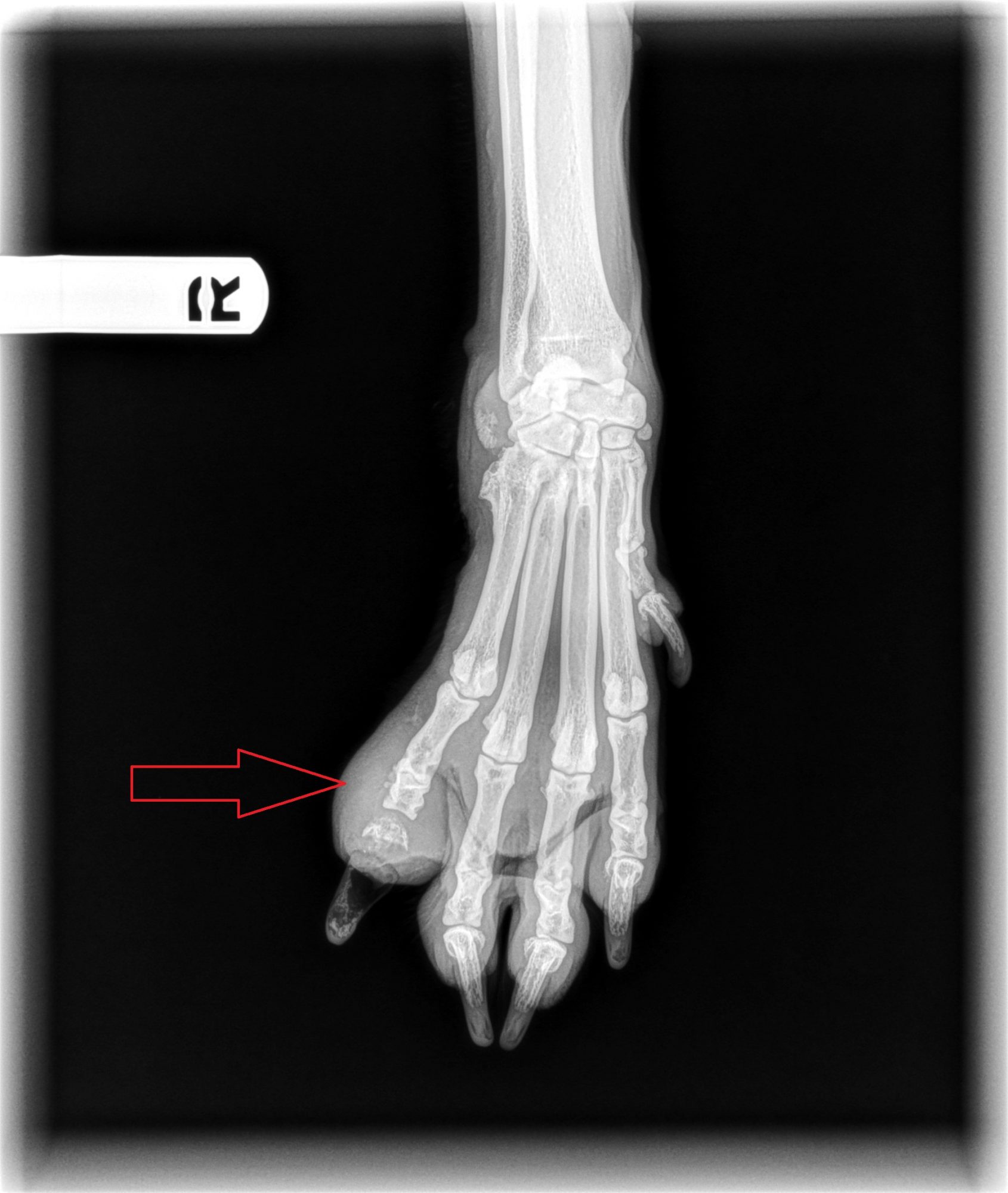
So here we went for yet another dilemma… Was it fair to do surgery? Was it ethical? When do we stop? What would you have done?
Again, Puppy Magic’s owner decided to give his pup a chance, and chose to go to surgery.
So, even though the clinic was in the middle of a giant snowstorm, we performed surgery to treat the laryngeal paralysis and amputated the toe.
Laryngeal paralysis causes difficult and noisy breathing.
The very next day after surgery, not quite used to the new situation, the owner wrote: “Breathing is good. I have to check Puppy’s stomach to see if he is breathing!”
That certainly was a good start!
One week after surgery: “He is walking much better – he has not walked this well in over 5 months.”
In addition, “Puppy is doing some good things he has not done in a while – like going into the kitchen to eat. His foot hurt too much before to do that.”
It’s the little things…
Sadly, 10 days after surgery, the diagnosis of cancer in the toe (squamous cell carcinoma) was confirmed. Fortunately, the cancer was removed 100%.
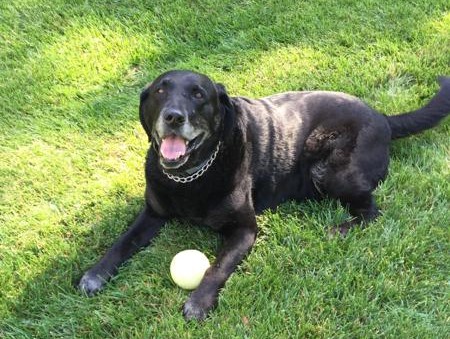
Two months after surgery, Puppy was finally done with healing. He was breathing well, wagging his tail, eating and drinking well, playful, eager to go on walks, and happy to be alive.
His owner concludes: “Puppy is doing great after his 4 surgeries. He has a great love of life and enjoys each moment.”
This story shows that when a family vet, a surgeon and a unusually dedicated pet owner work together, have open communication and trust each other, tricky situations, including cancer, can have a good outcome.
As of this writing, 6 months after his 4th surgery, Puppy Magic is still doing great.
Phil Zeltzman, DVM, DACVS, CVJ, Dear Free Certified

Dr. Phil Zeltzman is a traveling veterinary surgeon in Pennsylvania & New Jersey. An award-winning author, he loves to share his adventures in practice along with information about vet medicine and surgery that can really help your pets. Dr. Zeltzman specializes in orthopedic, neurologic, cancer, and soft tissue surgeries for dogs, cats, and small exotics. By working with local family vets, he offers the best surgical care, safest anesthesia, and utmost pain management to all his patients. Sign up to get an email when he updates his blog, and follow him on Facebook, too!
Squirrel gets a new lease on life after cleft palate surgery
Squirrel, a 2 year old bully mix, had an unusual problem.
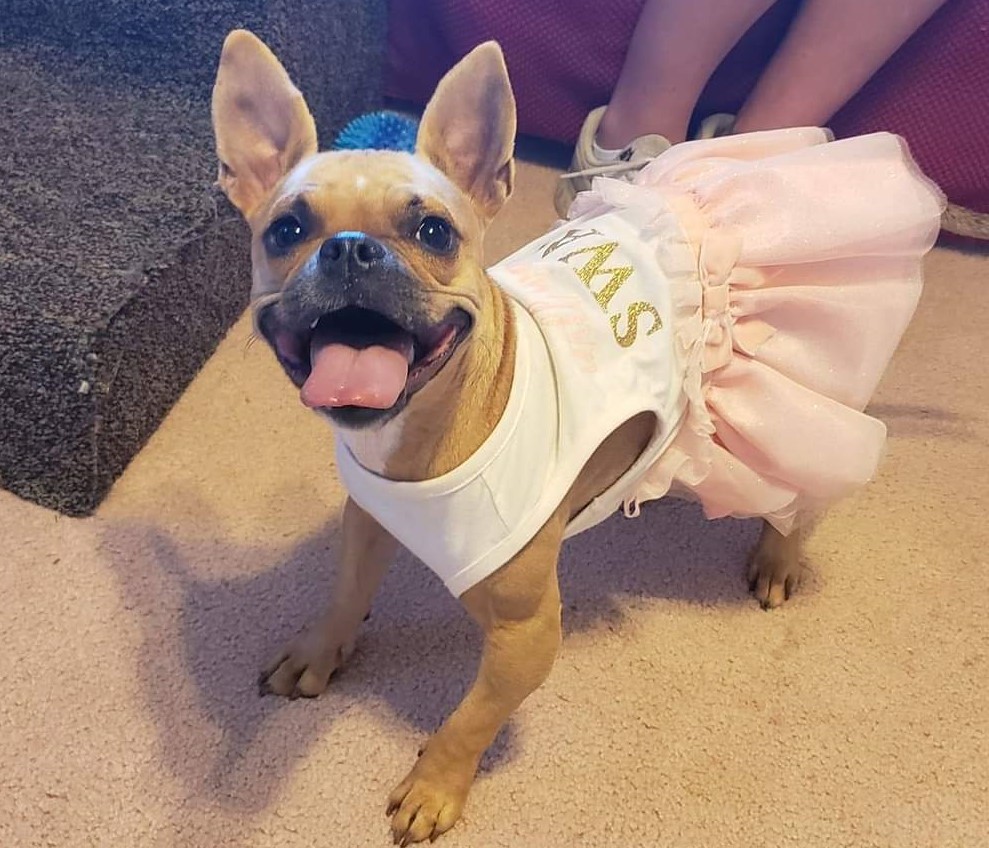
She was struggling with eating and drinking on her own, as well as playing and chewing on toys.
Thick, white mucus would build up and make it hard for her to swallow or breathe through her nose.
Because of that, it was difficult for her to gain weight.
This is how she looked when she was first adopted.
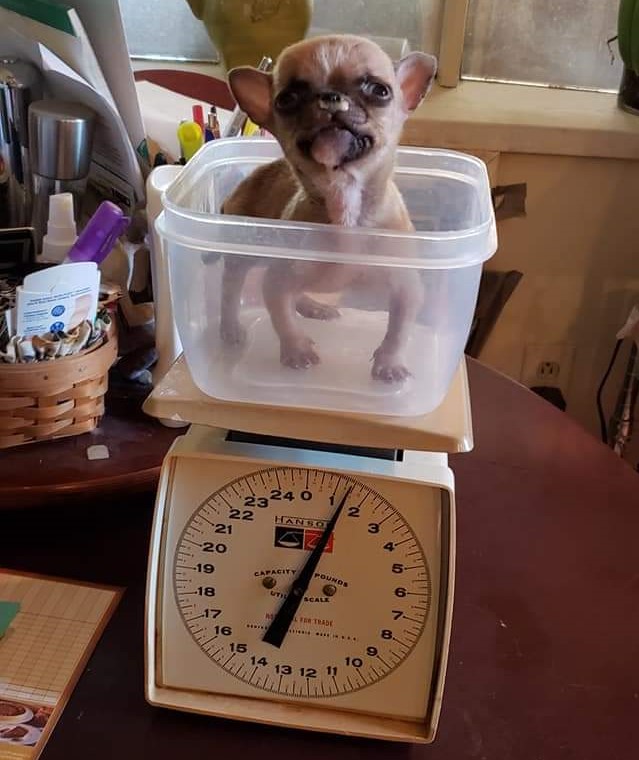
Her foster explained: “She is choking & sneezing food and mucus out her nose every day, anytime she moves around, plays or chews on toys.”
“We almost lost her a few times the first year,” said her foster. “So she is a fighter for sure. She is a spunky little thing loving life!”
Her diagnosis? A cleft palate.
This means that there was a split in the roof of the mouth (similarly, a cleft lip is a split in the lip).
That split allowed food and water to go up in the nasal passages, causing difficulty breathing and constant infections.
That also meant that she could not get the proper nutrition her body needed to grow properly.
This is the reason why a puppy (or a kitten) with a cleft palate is typically the runt of the litter.
Now, a bit of anatomy. When you touch the roof of your mouth, it is firm because there is bone behind it. You are touching your “hard” palate.
PICTURES OF THE CLEFT BELOW ARE GRAPHIC AND ARE NOT FOR THE FAINT OF HEART.
The bone then disappears in the back of the mouth, so that part of the palate is called the “soft” palate.
Based on preop pictures, Squirrel clearly had a cleft of the hard palate.
The surprise came when we put her under anesthesia. A more thorough exam revealed a cleft in 100% of the roof of the mouth. So little Squirrel had a cleft of the hard palate and the soft palate.
In all of the pictures of the mouth below, Squirrel is on her back, and you see the inside of the roof of the mouth.
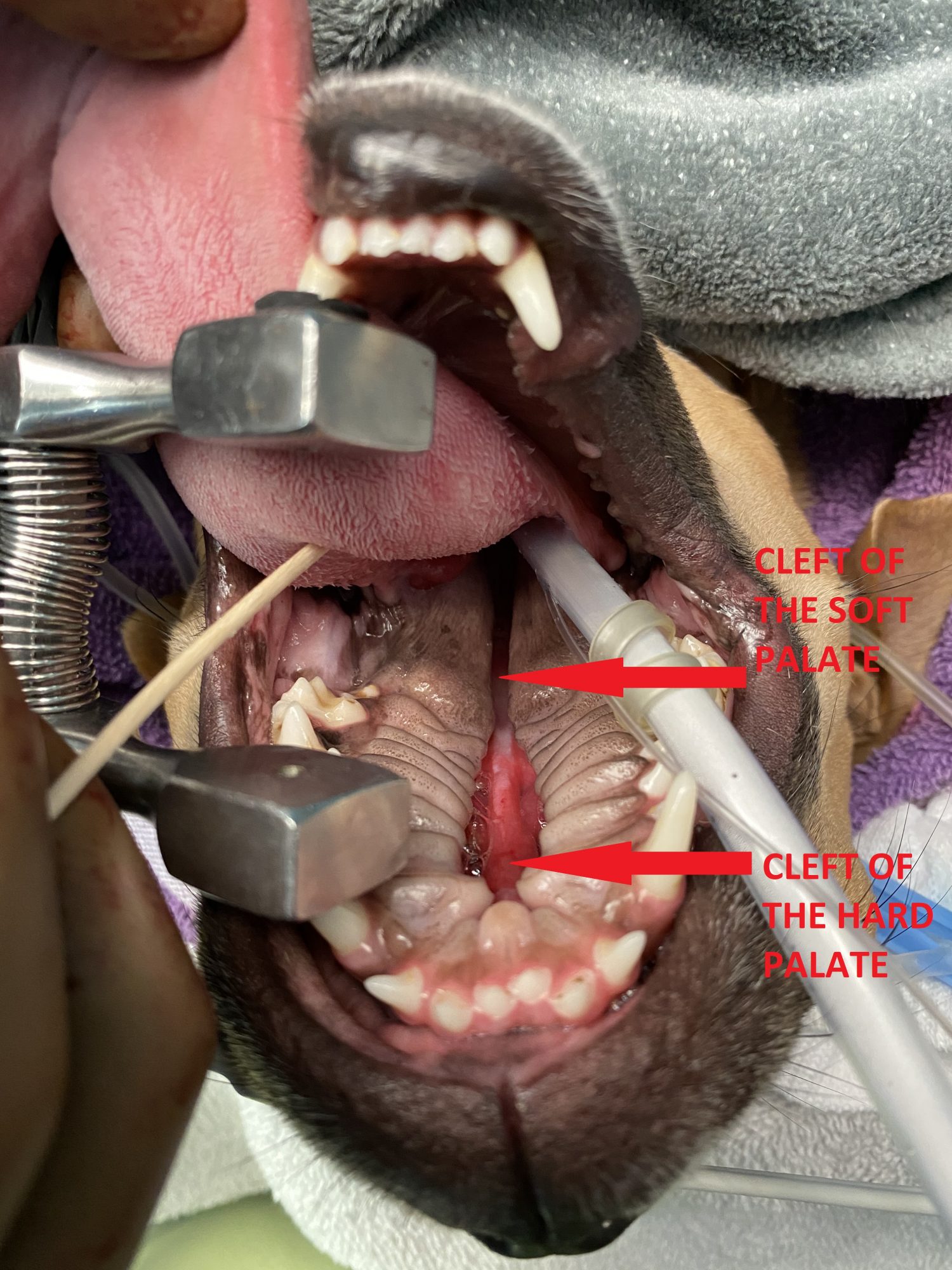
Surgery entailed stealing tissue from Peter to give to Paul.
WARNING: THE PICTURES BELOW ARE GRAPHIC, SO CONTINUE AT YOUR OWN RISK.
We created a “flap” by using healthy tissue from each side of the roof of the mouth to cover the defect or split in the middle.
In the end, we were able to cover the entire defect in the hard and the soft palate.
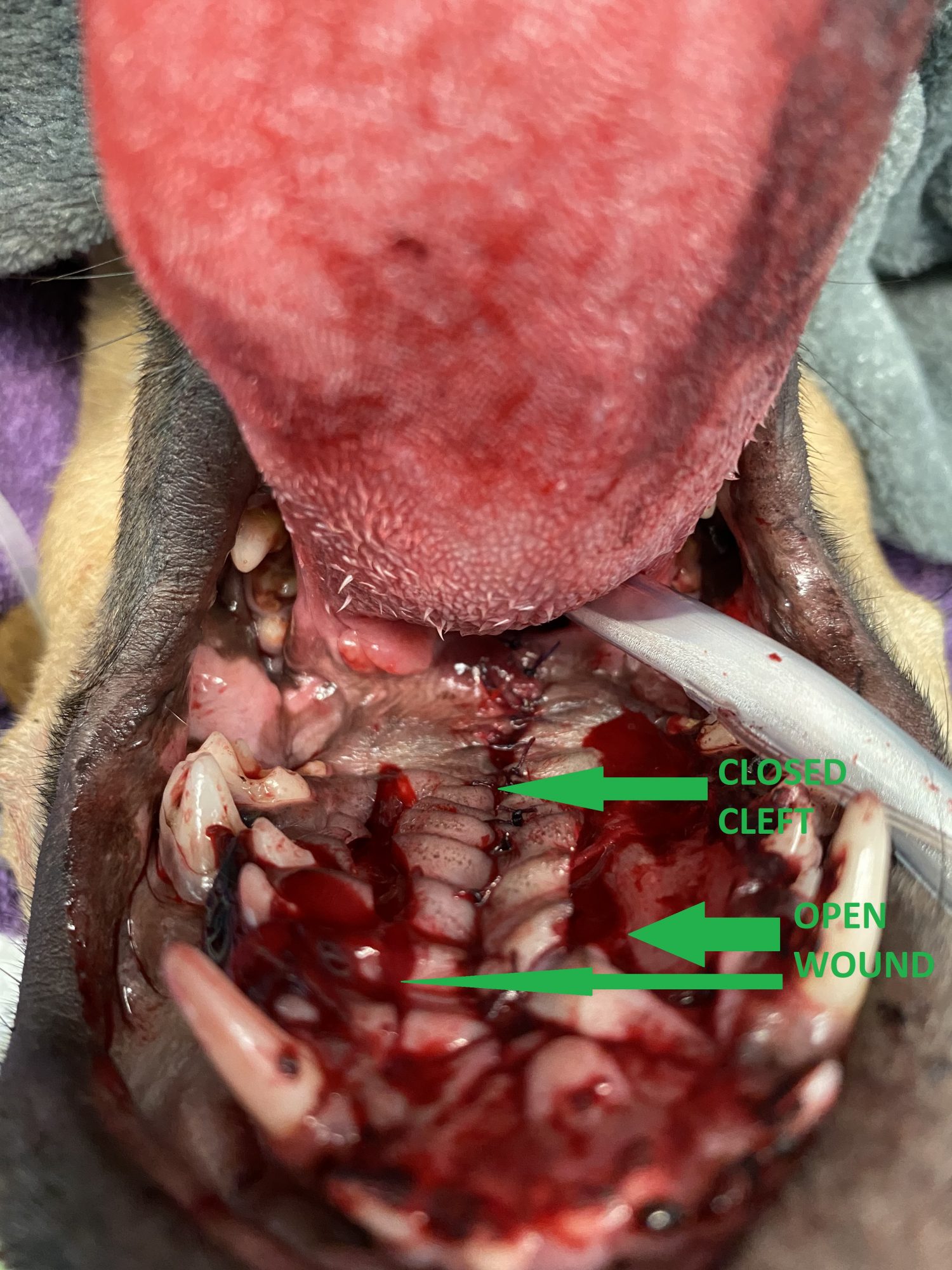
Squirrel went home safely the day of surgery.
She had to be kept quiet and away from chew toys and hard food for 3 weeks to protect the surgery site and the stitches.
Her foster took exceptional care of her… She did not spoil her at all as you can see in this picture…
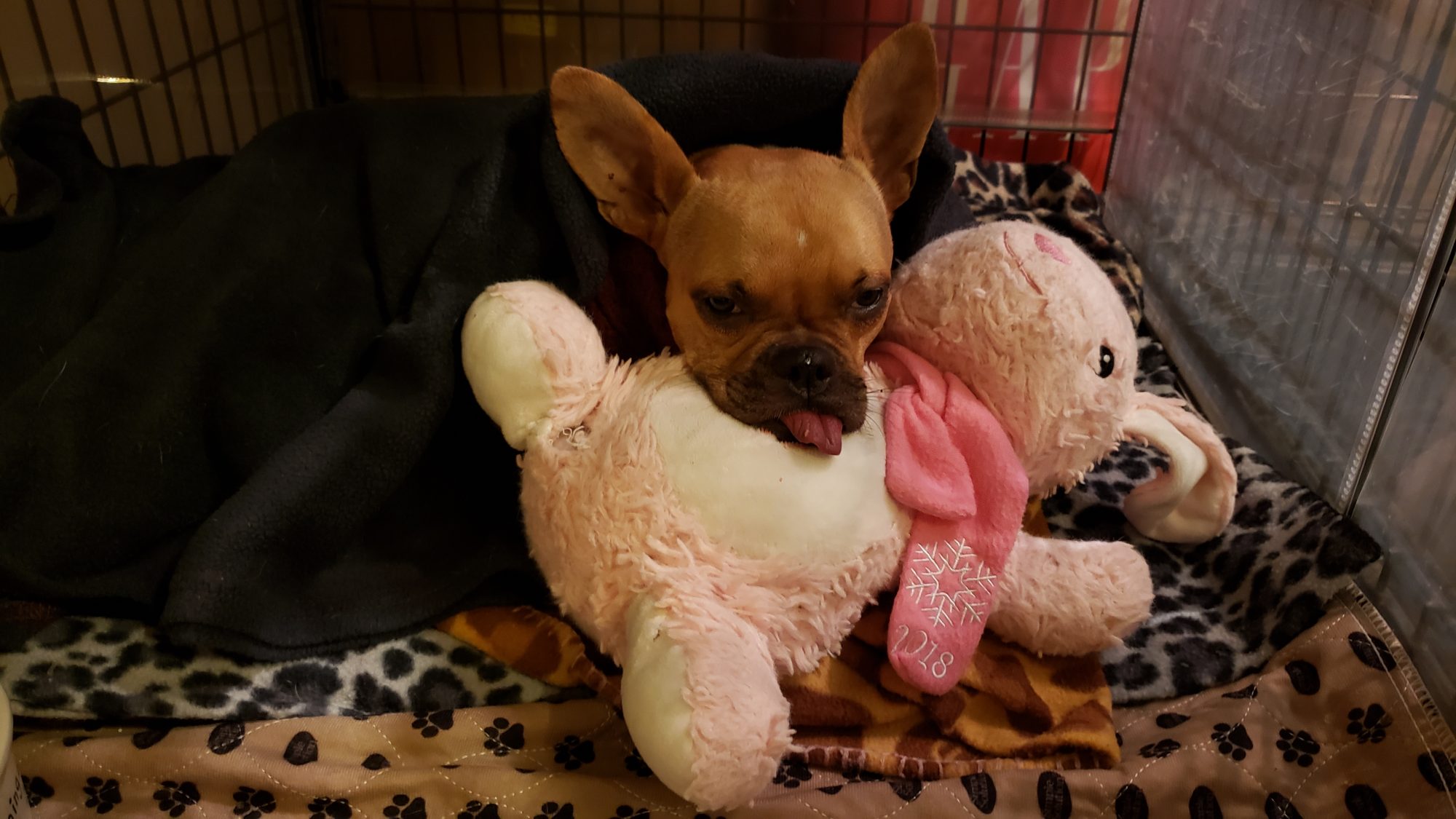
Only two days after surgery, her foster commented: “She is eating watered-down canned food, and lots of it. She is also drinking better. Hardly any sneezes. She doesn’t seem painful. I am amazed at how well she is doing honestly!! She seems surprised she can breathe through her nose and not sneezing.”
Four days after surgery, she kept improving: “Squirrel is now eating soft can food. No water added. She ate half a can this morning.”
Three weeks after surgery, we examined her mouth under sedation to assess the surgery site.
Thankfully, 100% of the surgery area “took.” The left side of the mouth (the pink area) still needed a bit more time to heal as nicely as the right, but I was reassured that everything worked out after the first surgery.
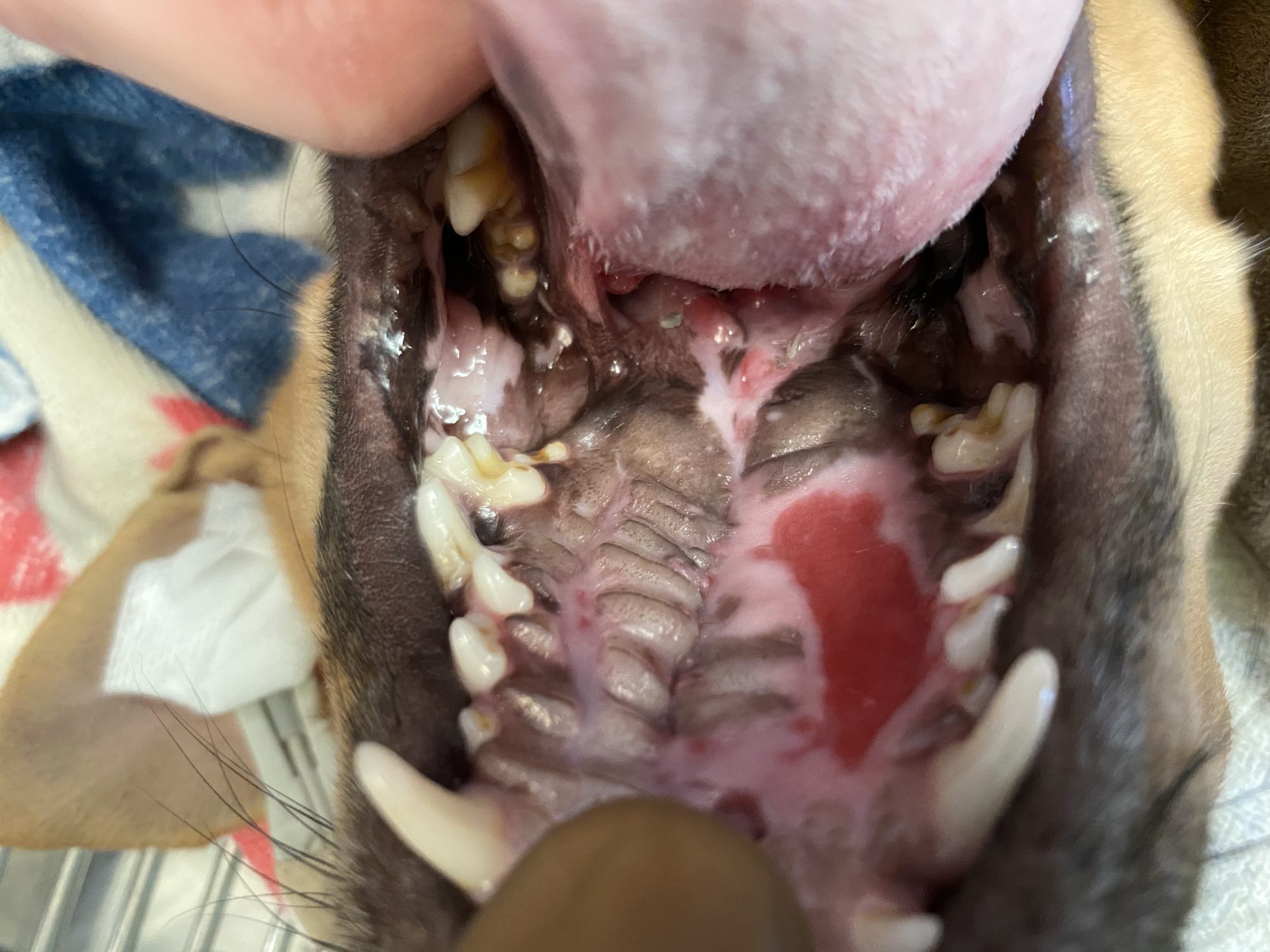
Squirrel’s foster concludes: “I cannot thank you enough for giving her this gift! She now has a new lease on life.”
Phil Zeltzman, DVM, DACVS, CVJ, FFcert.

Dr. Phil Zeltzman is a traveling veterinary surgeon in Pennsylvania & New Jersey. An award-winning author, he loves to share his adventures in practice along with information about vet medicine and surgery that can really help your pets. Dr. Zeltzman specializes in orthopedic, neurologic, cancer, and soft tissue surgeries for dogs, cats, and small exotics. By working with local family vets, he offers the best surgical care, safest anesthesia, and utmost pain management to all his patients. Sign up to get an email when he updates his blog, and follow him on Facebook, too!
You removed how much of Mimi’s jaw???
Mimi, a cute 9 year old miniature poodle, started to bleed from the left side of the mouth.

Initially, it was on and off, nothing scary. Then she started to drool after eating and drinking. Sometimes, the saliva was mixed with blood. When the bleeding became consistent, Mimi’s owner went to her family vet.
The conclusion was shocking: Mimi had a tumor in her left lower jaw bone (mandible). Her vet took X-rays (below), which showed that the front of the left lower jaw bone was eaten away by an aggressive tumor, which the back section of the jaw showed a growing tumor.
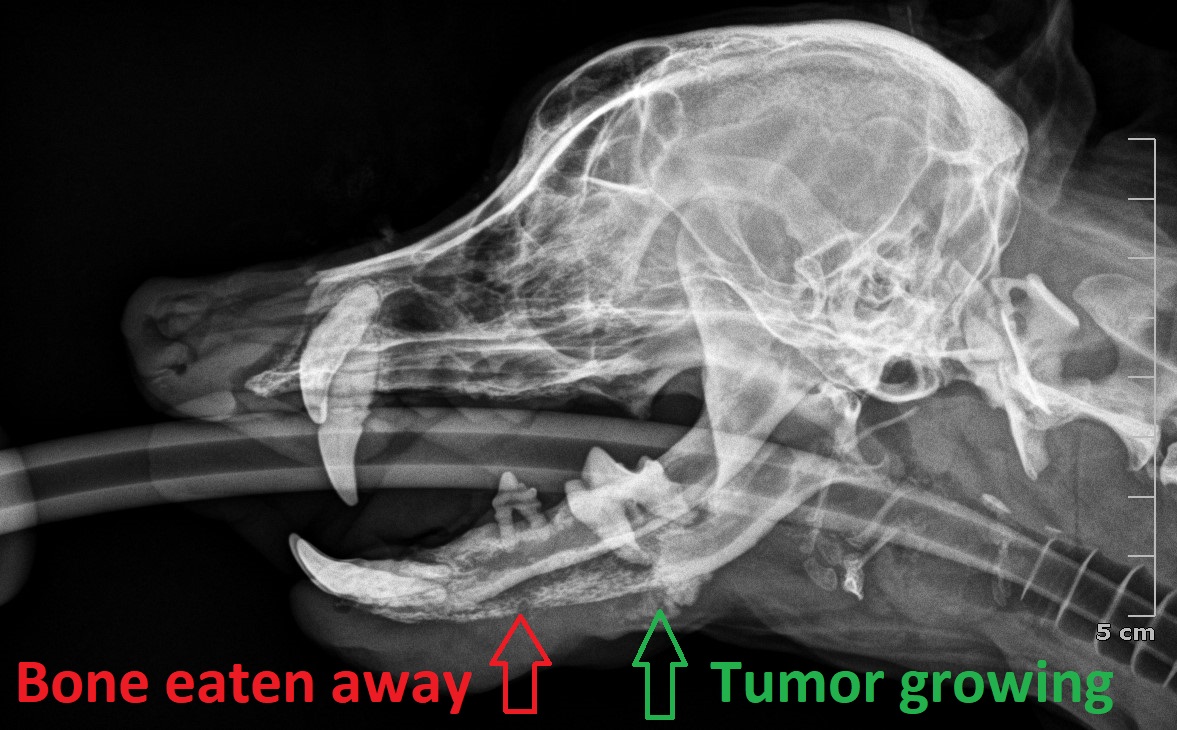
WHAT FOLLOWS IS GRAPHIC, SO YOU MAY WANT TO STOP READING IF YOU ARE A SENSITIVE SOUL.
Mimi was referred for surgery. It is necessarily invasive, because you can’t remove the mass only. The tumor was in the jaw, so part of the jaw, including the teeth, had to be removed. Removing part of the lower jaw or mandible is called a partial mandibulectomy. As drastic as it sounds, dogs look fairly good after this surgery. More importantly, they’re finally comfortable once the mass is removed.
Mimi’s owner drove all the way from from New York City to Harrisburg Regional Vet Surgical Specialty ( www.HRVSS.com ).
I had a long heart to heart with Mimi’s owner, trying to explain (along with pictures) how Mimi would look like after surgery. I kept saying: “It’s not for everybody.”
All Mimi’s owner wanted is to help her dog get comfortable.
On exam, it appeared that the mass had grown so much, that it had invaded the front of the jaw and extended to the right half of the mandible.
Now, that was a whole different story. Almost ALL of the mandible had to be removed. This is called a radical mandibulectomy. This is much more invasive and cosmetically dramatic.
I called Mimi’s owner and we had another heart-to-heart discussion. Again, I said: “It’s not for everybody.”
But Mimi’s owner was committed to doing anything to help her dog, knowing the possible risks and complications. So we proceeded with surgery.
Actually, before an invasive surgery, we needed to make sure the tumor had no spread to the lung (see X-ray below), which fortunately it had not.
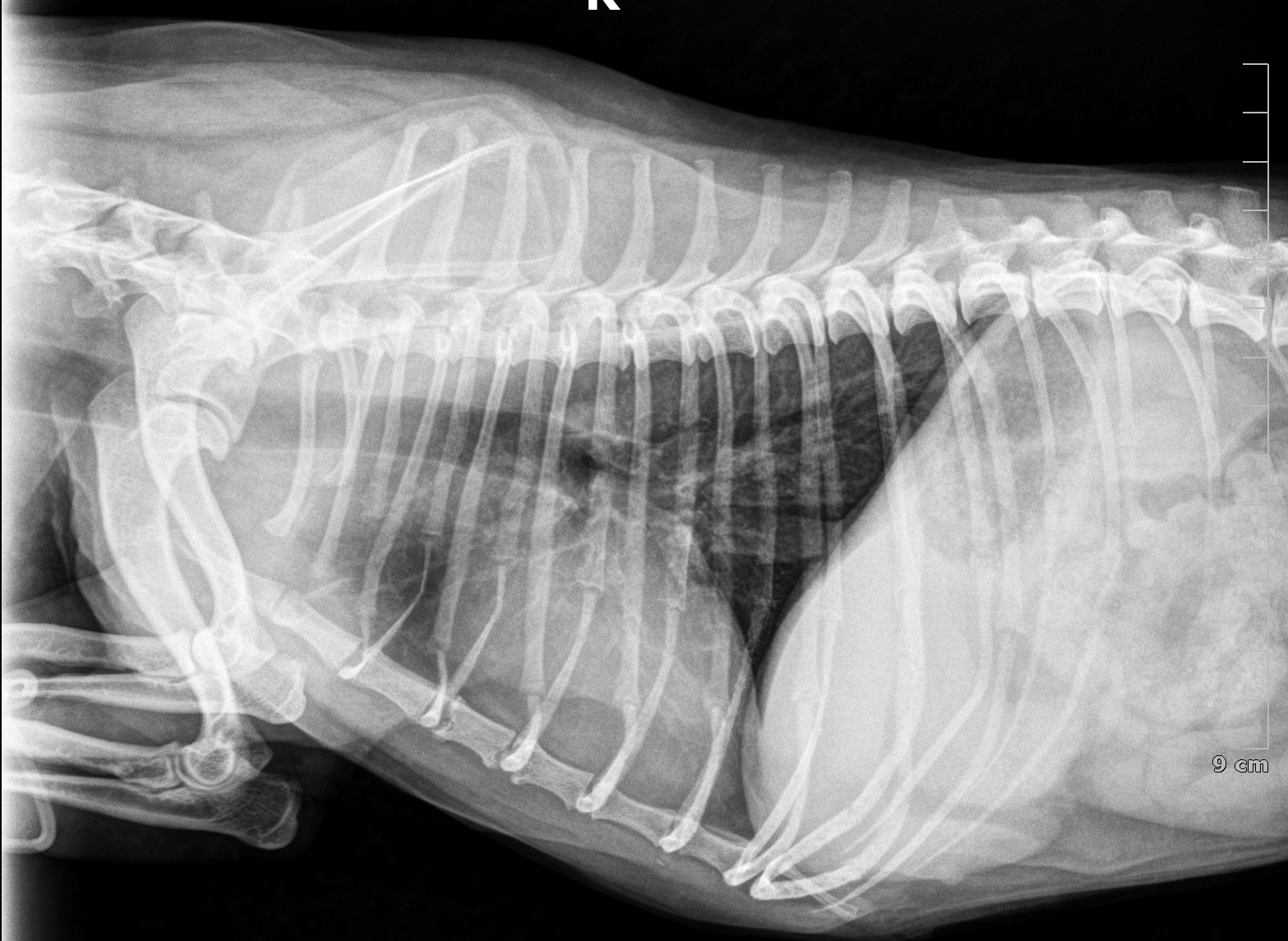
YOU HAVE BEEN WARNED, WHAT FOLLOWS IS NOT FOR THE FAINT OF HEART.
Surgery was uneventful. About 95% of the lower jaw was removed with no complications. Mimi recovered smoothly from anesthesia. She was kept overnight in the hospital, where she was monitored by a nurse, and received plenty of TLC.
Thanks to multiple types of pain medications given before, during and after surgery, she seemed very comfortable. So comfortable, that she ate 4 times that night!
Of course, she had to relearn how to eat, so things were a bit messy as you can see in the picture below.
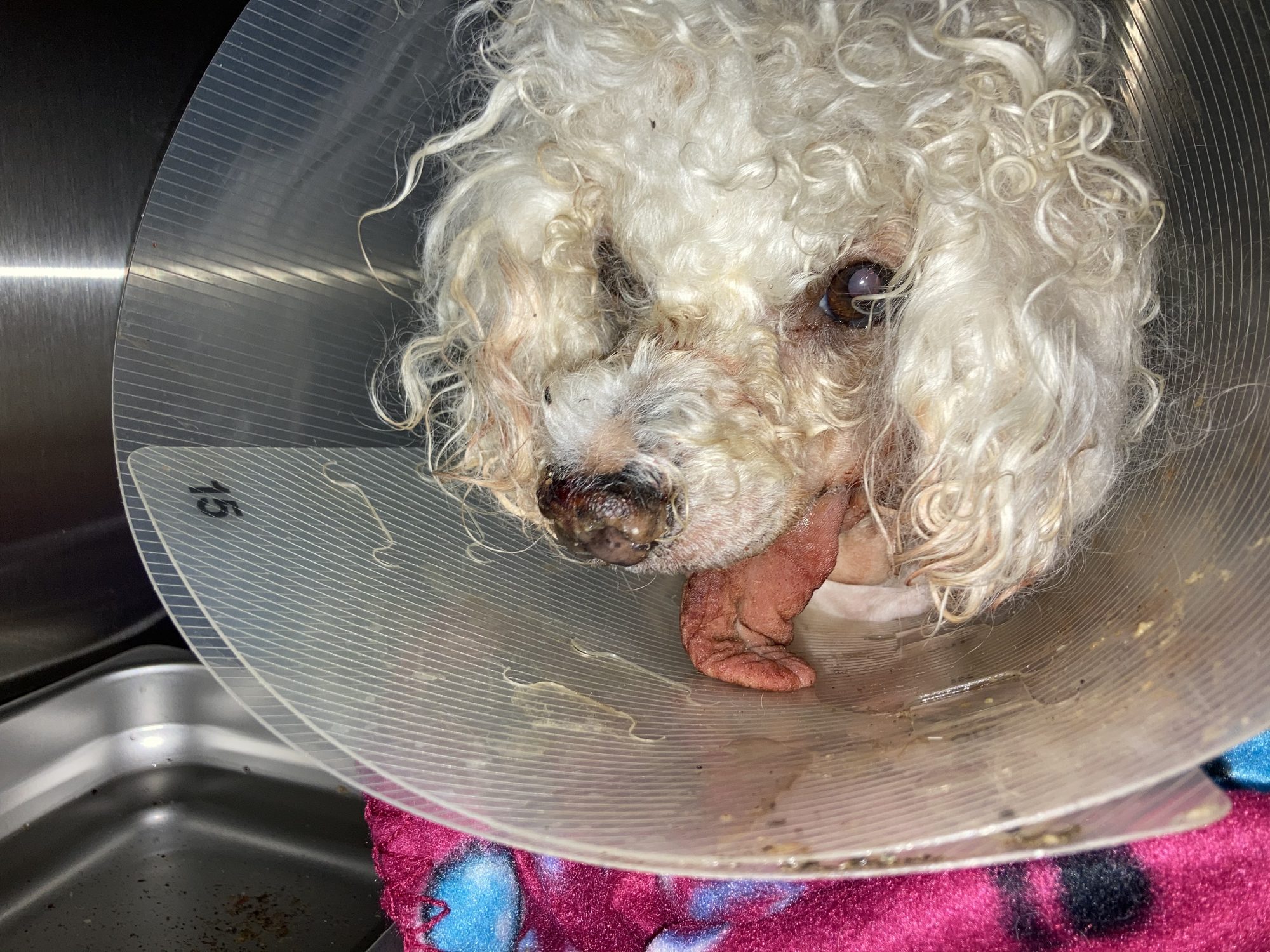
Mimi was discharged the very next morning.
The jaw was sent out to the lab for evaluation. The tumor was a squamous cell carcinoma, one of the most common types of cancer in the mouth (in cats and dogs).
Fortunately, the lab confirmed that we “got it all.”
Since surgery, Mimi has been home, where her owner took exceptionally good care of her.
Clearly, this surgery is not for everybody. It requires a very dedicated and loving pet owner who is willing to assist their pet with eating and drinking as needed, and who can get over the cosmetic appearance of their pet without judgment.
With modern surgery and generous pain medications, most pets do very well after invasive surgery, including removing a large part of the jaw.
Phil Zeltzman, DVM, DACVS, CVJ, Fear Free Certified

Dr. Phil Zeltzman is a traveling veterinary surgeon in Pennsylvania & New Jersey. An award-winning author, he loves to share his adventures in practice along with information about vet medicine and surgery that can really help your pets. Dr. Zeltzman specializes in orthopedic, neurologic, cancer, and soft tissue surgeries for dogs, cats, and small exotics. By working with local family vets, he offers the best surgical care, safest anesthesia, and utmost pain management to all his patients. Sign up to get an email when he updates his blog, and follow him on Facebook, too!
From Florida to Pennsylvania: Mae Mae the Lab gets “a new lease on life” after tie back surgery for laryngeal paralysis
This may be one of my craziest success stories ever, and definitely my furthest traveling patient ever.
Mae Mae, a 10 year old Lab who had laryngeal paralysis (which we call “lar par”), was traveling from Florida to NY State with her owner.
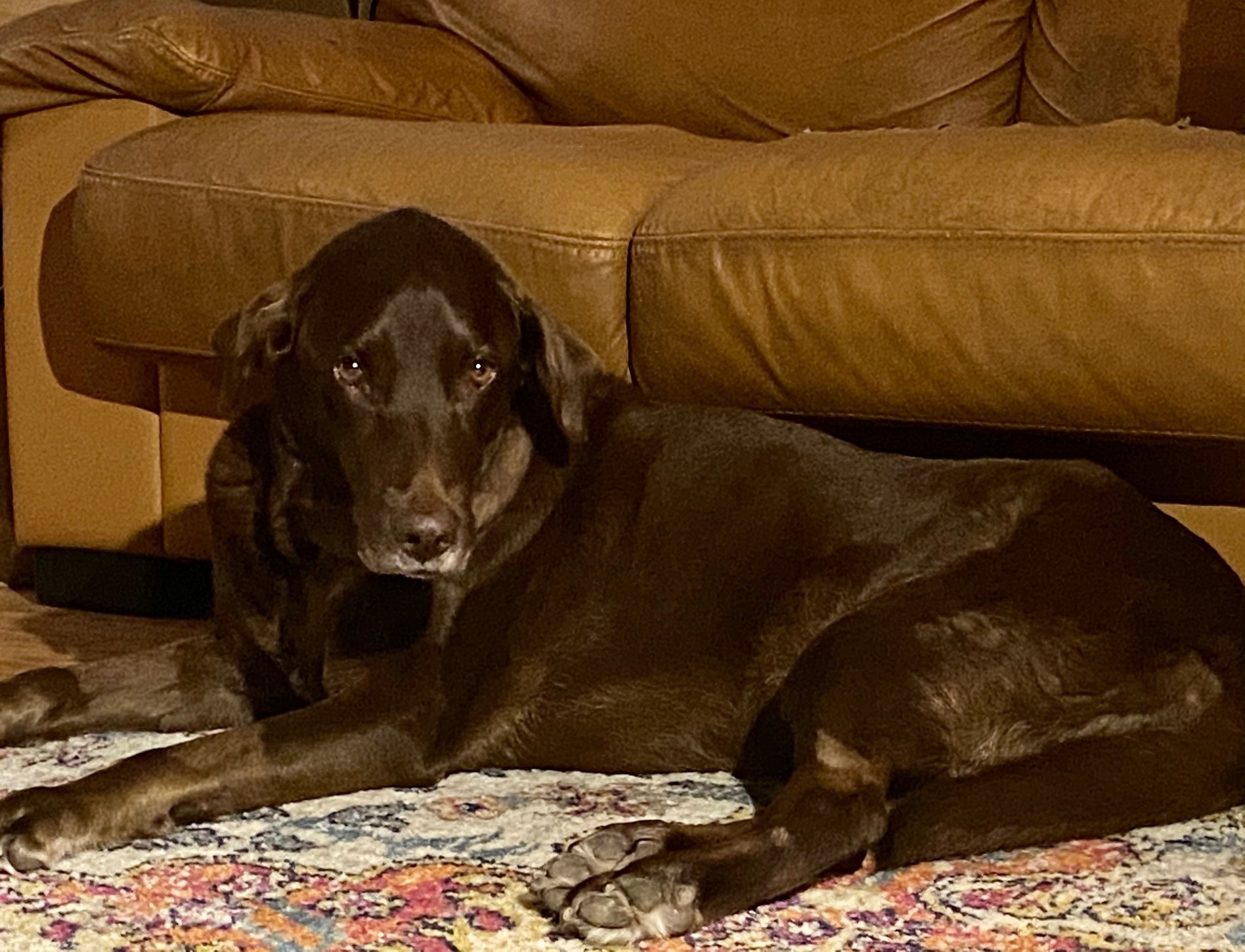
As they arrived in Pennsylvania (where I live), Mae Mae had a severe bout of suffocation. Her owner contacted me after finding me on my website. His dog was in serious trouble.
In his own words: “We were on our way from Key West (FL) to The Adirondacks (NY). As we were driving through Harrisburg, PA, around 11 pm, Mae suddenly couldn’t breathe. Her lar par had, in an instant, gone from manageable to life threatening. Fortunately, we were close to a vet ER. They saved her life. They said she was very healthy and a good candidate for lar par surgery.”
“I sent you an email and was blown away to receive an almost immediate response and then a call. I knew then that Mae Mae was meant to be there in Pennsylvania at that moment and she was meant to live.”
We scheduled Mae Mae for emergency surgery at www.BrodheadsvilleVet.com. Surgery went well. She then recovered well with her owner.
“Great night sleep, for both of us. She’s doing well.”
But then it occurred. The dreaded complication happened: aspiration pneumonia. This is a type of pneumonia due to aspiration, or inhalation, of food, water, saliva or vomit into the lungs. Mae Mae was coughing and was extremely weak. She had no appetite.
She went to the local ER (www.BartonHeights.com).
“She spent a week in the ER. She had been through so much. She had literally given up. Because of COVID, I wasn’t allowed to see her. She was finally allowed in a private room where I spent half the day with her, every day. I would lay on the floor with her for 5 hours a day and try to get her to eat a little. Every day, she made a little more progress.”
It’s true. It looked as if Mae Mae had given up. She wasn’t fighting. So we fought for her. The doctor team and the nursing team did everything by the book to treat the pneumonia: antibiotics, nebulization, antibiotics, coupage, and lots of TLC.
Her biggest cheerleader was her owner. Despite the financial commitment and the emotional rollercoaster, he stood by her side, literally, as much as possible. In the end, Mae Mae recovered and finally continue her trip to the Adirondacks.
Her owner and I are convinced that she recovered thanks to the amazing dedication of one particular nurse, which we will call Shelly.
“Mae Mae is a special soul. You (Dr Zeltzman) and Shelly provided the best medical care I have ever experienced for pet or human. I will never be able to thank you enough.
Thank you for giving Mae Mae a new lease on life. Literally it has been like watching her be reborn. She is 10 years old and I am grateful I will get the opportunity to watch this precious soul grow old.”
Then Mae Mae travelled back home in Florida.
After 1 month, she was doing well, but was still pretty weak.
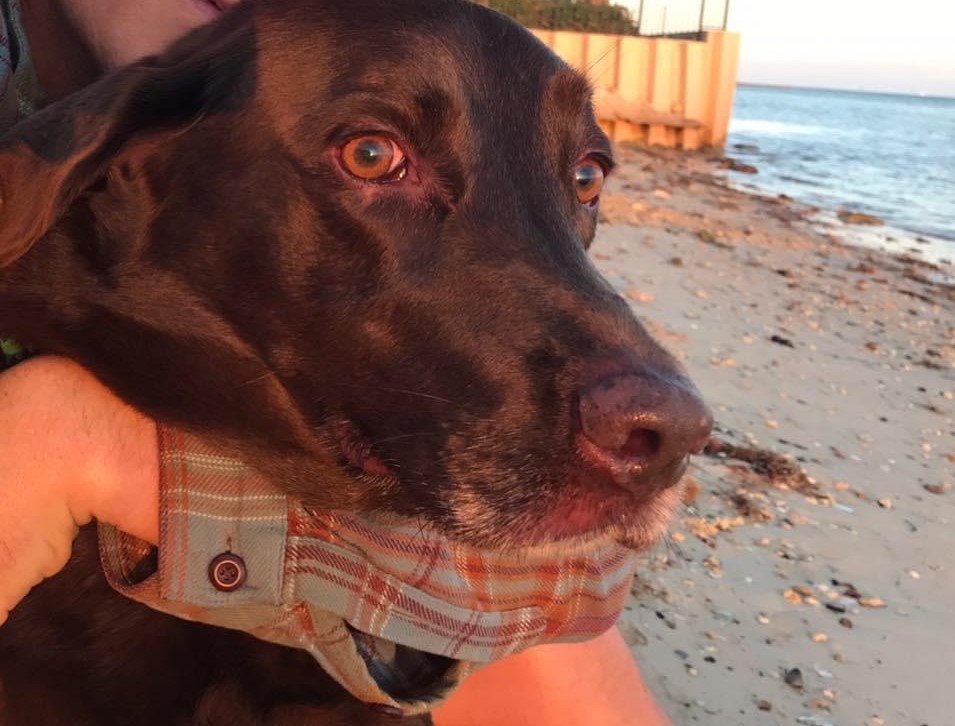
After 2 months, she is happy and much stronger, as shown in this short video: https://youtu.be/67WiKl9tpr4
Bottom line: “lar par is not a death sentence.” It’s a treatable condition. It has definite, well-known, possible complications. Even if we end up with aspiration pneumonia, most dogs who are treated aggressively can overcome this aggressive and potentially deadly complication.
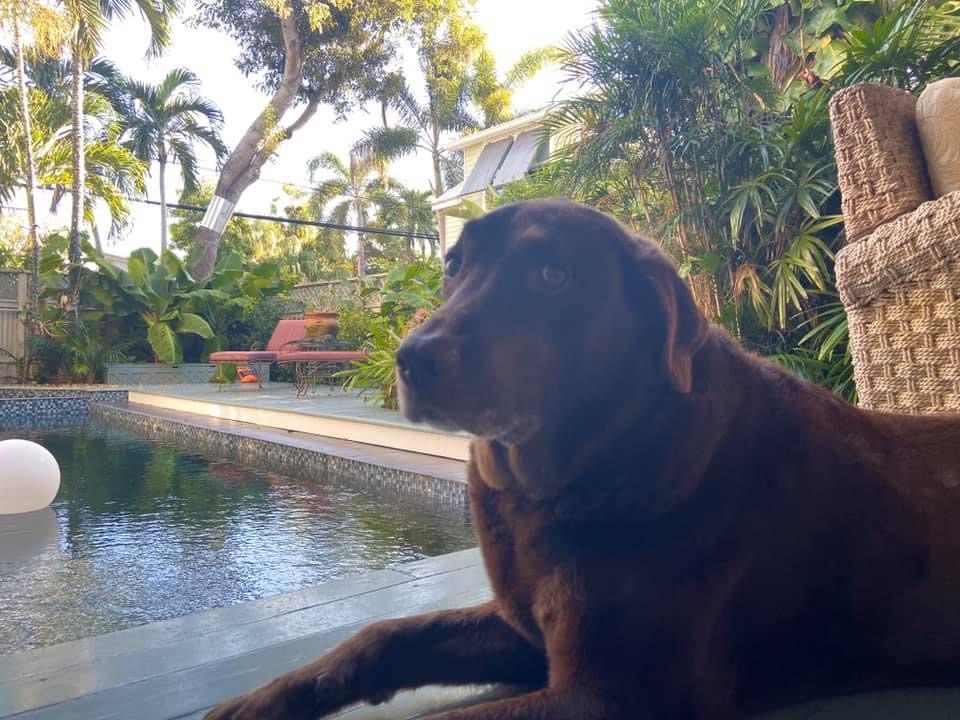
Thanks to her owner’s amazing dedication, Mae Mae can breathe easy in Key West, where she enjoys a life of rest, walks on the beach, good food and puppy love.
Phil Zeltzman, DVM, DACVS, CVJ, Fear Free Certified

Dr. Phil Zeltzman is a traveling veterinary surgeon in Pennsylvania & New Jersey. An award-winning author, he loves to share his adventures in practice along with information about vet medicine and surgery that can really help your pets. Dr. Zeltzman specializes in orthopedic, neurologic, cancer, and soft tissue surgeries for dogs, cats, and small exotics. By working with local family vets, he offers the best surgical care, safest anesthesia, and utmost pain management to all his patients. Sign up to get an email when he updates his blog, and follow him on Facebook, too!

